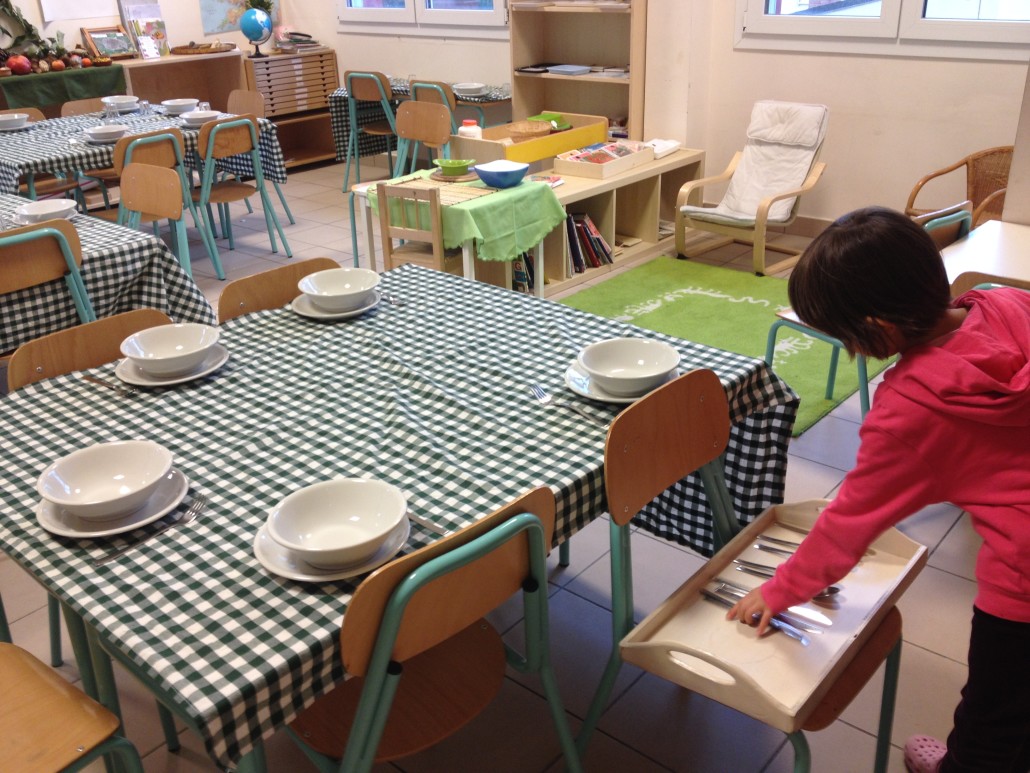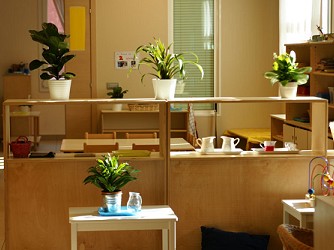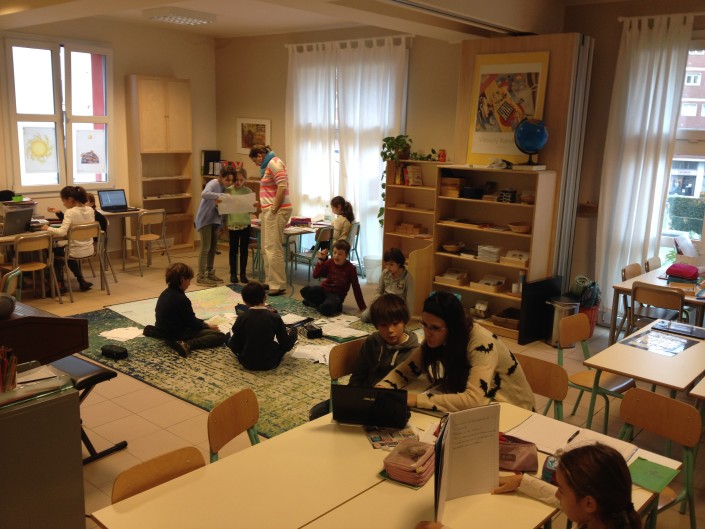The environment
The organisation of space in a Montessori school is very important. The environment built for the child must be a real life environment that is specifically appropriate for the children who occupy it.
The school serves a diverse group of children and it has to prepare and adapt to welcoming children of different ages, interests and various needs. In the classrooms, the organization of space, furniture, activities and materials can determine children’s behavioral patterns.
Functionality, simplicity, order and aesthetically pleasing environments are reassuring characteristics that promote positive responses and increased engagement.
Furniture and other objects in the environment have to be child-size and match the ages and bodies of children in order to promote autonomous activity.
For the same educative purpose:


“Children’s furniture, tables and chairs, must be “light” not only to be moved easily by a child’s arms, but because of their fragility they help in his education. And for the same criteria, ceramic plates, glasses and breakable ornaments are given to children. Incidentally these objects are the “markers” of rough and erratic movements. Therefore, the child is led to correct himself and tries not to hit, spill or break, manipulating his movements so that he gradually becomes a perfect owner and manager”
Maria Montessori, The Advanced Montessori Method

Our school is divided internally into different areas, depending on subject or activity: there are areas dedicated to Maths, Languages, History, Geography, Science, Botany and Practical Life. The Children’s House also has an area especially dedicated to Arts and Crafts, which includes the manipulation of different objects, materials and textures. All educational materials are neatly arranged and can always be found in the same place This way, children can access them autonomously, the reason being that “School must become the place where children can experience freedom”.
Accurately preparing the learning environment is one of the teacher’s main tasks. The choice of materials made available to the children is based on differentiated learning paces, different interests and the needs which are specific to each age group. The preferred material is wood, as it is pleasant to sight and touch.
Moreover, the Primary School environment is organized to encourage both individual and group work. Each classroom has its own library corner, which helps foster in the children an interest in reading and researching. La biblioteca di classe permetterà la lettura e la consultazione di testi per le ricerche dei bambini.

